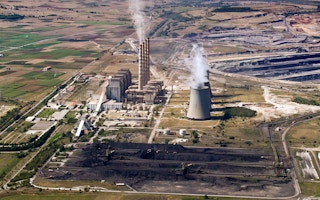Global investment in fossil-fuel energy continues to outpace new spending on renewable sources, leaving the world on track for temperature increases of at least 3.6 degrees, according to a new report by the International Energy Agency.
Last year, more than $1.1 trillion (A$1.19 trillion) was poured into the extraction, transport and burning of fossil fuels, producing much of the greenhouse gas emissions largely blamed for global warming.
By contrast, $US250 billion was invested in clean energy sources, such as solar and wind energy, down from the 2011 peak of $US300 billion, the Paris-based IEA said in its inaugural World Energy Investment Outlook study. Energy efficiency efforts attracted another $US130 billion.
To keep global warming to within 2 degrees of pre-industrial levels – the internationally agreed target – annual investment in low-carbon energy supply would need to rise to almost $US900 billion and spending on energy efficiency needs to exceed $US1 trillion, said the IEA’s chief economist, Fatih Birol.
“Dependable policy signals will be essential to ensure that these (renewable energy) investments offer a sufficiently attractive risk-adjusted return,” Dr Birol told Fairfax Media.
Policymakers have “the most important role to play” in driving such investments, he said: “They need to provide clear and credible signals that lower risks and inspire confidence if we are to switch investment to low-carbon sources and energy efficiency at the necessary scale and speed to meet the world’s climate change target.”
“
To keep global warming to within 2 degrees of pre-industrial levels – the internationally agreed target – annual investment in low-carbon energy supply would need to rise to almost $US900 billion and spending on energy efficiency needs to exceed $US1 trillion
Fatih Birol, IEA’s chief economist
Dr Birol’s comments come hours after US President Barack Obama unveiled the US government’s most ambitious policy to tackle climate change. Power plants will be required by the US Environmental Protection Agency to reduce emissions by 30 per cent of 2005 levels by 2030.
Australia’s own emissions target had an inadvertent increase of its own this week. As the Abbott government had failed to scrap the carbon price by May 31, a default cap on emissions came into effect ahead of the proposed start of an emissions trading scheme next year.
If the Abbott government fails to repeal or amend the Gillard government’s Clean Energy Act, Australia’s target will be more than tripled to 18.8 per cent of 2000 levels by 2020 rather than the bipartisan-backed 5 per cent.
Globally, temperatures have risen about 0.8 degrees in the past century. In its latest report out last year, the Intergovernmental Panel on Climate Change offered a range of scenarios on the likely increase in global temperatures by the end of the century.
Based on differing emissions projections, global mean surface temperatures will rise 0.3-4.8 degrees in the 2081-2100 period compared with 1986-2005, the IPCC said.
High-emissions trajectory
The IEA report indicates “a major disconnect between climate change goals and actions being taken to meet them”, Dr Birol said.
On the current trajectory, investment in the energy sector will amount to a mammoth $US48 trillion between now and 2035, including $US8 trillion on energy efficiency, the report says.
Of that total, about $US23 trillion will go into fossil-fuel extraction, transport and oil refining, and $US7 trillion into transmission and distribution.
Despite the increase in fossil-fuel investments, relatively little of the investment in power generation will be in new fossil-fuel burning plants. Of the $US10 trillion to be channelled into new electricity generation capacity, about $US6 trillion will go into renewables and $US1 trillion into nuclear plants, the IEA estimates.
The IEA’s Dr Birol said investment trends were subject to changes in economic conditions, unexpected events in terms of resource availability, technological breakthroughs and the introduction of more stringent energy and environmental policies.
He said the Obama administration’s plans to curb emissions from the power sector “are good examples of actions that could shift the pattern of investment, at least within the United States”.
“But let’s not forget that the global energy system is a juggernaut: it cannot change direction sharply or quickly so unless other countries follow suit it is unlikely to dramatically alter the breakdown of investment needs at the global level,” Dr Birol said.










